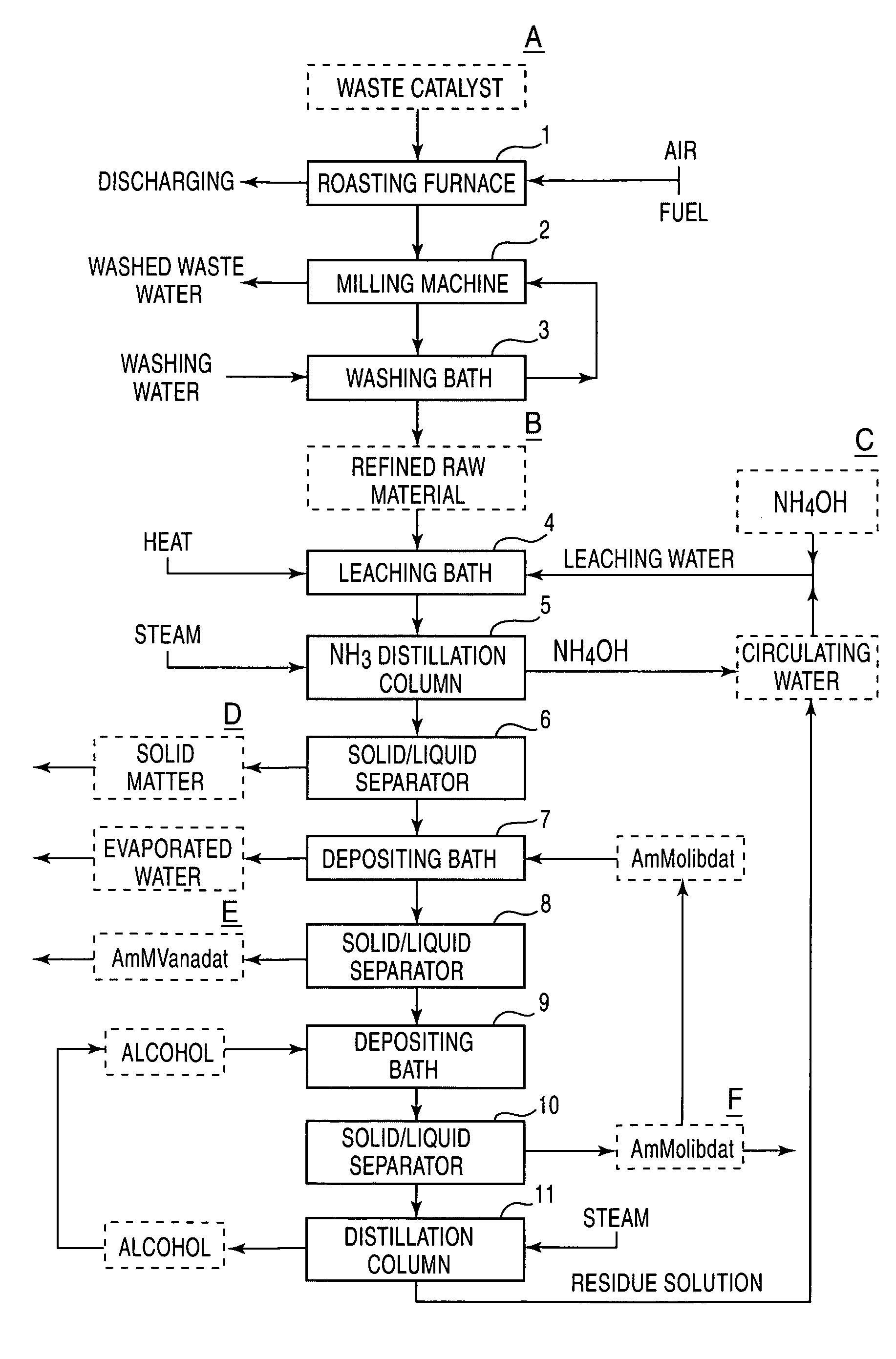Process for separating and recovering valuable metals
a technology for valuable metals and separating processes, applied in chemical/physical processes, niobium compounds, combustible gas purification/modification, etc., can solve the problems of environmental pollution, waste of valuable metals, complex steps, etc., and achieve the effect of increasing the deposit degree of ammonium metavanadate, and reducing the amount of was
- Summary
- Abstract
- Description
- Claims
- Application Information
AI Technical Summary
Benefits of technology
Problems solved by technology
Method used
Image
Examples
example
[0033]Hereafter, a process for separating and recovering valuable metals of the present invention will be set forth in detail with reference to an Example. In addition, the present invention is by no means limited due to this Example, and can be carried out, as appropriate, with modifications within the spirit of the present invention.
[0034]A waste catalyst used in desulfurization treatment of petroleum was spread on a heat resistant wire gauze and was heated with a gas burner to remove by burning oil matter and sulfur adhering to the waste catalyst. Then, the resultant catalyst was transferred into a rotary tube electric furnace having a diameter of 10 cm and a length of 90 cm and was oxidation roasted at 600° C. for three hours while ventilating. Further, the resulting material was subjected to grinding with a dry DESINTA type grinder followed by water washing. The pretreated waste catalyst thus prepared had a metal component content of 7.2% vanadium, 4.9% molybdenum, 2.9% nickel,...
PUM
| Property | Measurement | Unit |
|---|---|---|
| temperature | aaaaa | aaaaa |
| temperature | aaaaa | aaaaa |
| temperature | aaaaa | aaaaa |
Abstract
Description
Claims
Application Information
 Login to View More
Login to View More - R&D
- Intellectual Property
- Life Sciences
- Materials
- Tech Scout
- Unparalleled Data Quality
- Higher Quality Content
- 60% Fewer Hallucinations
Browse by: Latest US Patents, China's latest patents, Technical Efficacy Thesaurus, Application Domain, Technology Topic, Popular Technical Reports.
© 2025 PatSnap. All rights reserved.Legal|Privacy policy|Modern Slavery Act Transparency Statement|Sitemap|About US| Contact US: help@patsnap.com

